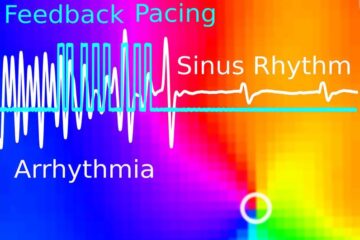Cutting edge – Scientists have combined a cutting ribosyme activity with an unwinding helicase activity

Scientists have long toyed with the idea of putting to work a special class of biological catalysts, called ribozymes, as therapeutic agents. These molecular scissors would harness the activities of overly active genes that contribute to diseases like cancer by cutting their immediate products, messenger RNAs, into unusable pieces. The advantage of this approach, is that these molecules can be made to recognize very specific targets. This is reported in this month issue of EMBO reports.
Up until now, however, technical difficulties have hampered the development of such tools; the targets for these molecules are often folded extensively, making particular cleavage sites inaccessible to the catalyst. However, in the May 15 issue of EMBO reports, H. Kawasaki and K. Taira report on a technical breakthrough. By linking ribozymes to helicases, cellular components whose normal function is to ‘smooth out’ folded RNA’s to allow them to be ‘translated’ into proteins, these investigators have managed to circumvent this ‘folding’ difficulty. They have been able to efficiently inhibit the activities of a number of target RNA’s, even at sites that are known to be inaccessible to regular ribozymes. This has further allowed them to develop a method for investigating the functions of random RNA’s, creating a tool that may be invaluable in characterizing the functions of many of the previously unknown genes that have only recently been uncovered by various genome projects. Although we are not yet ready to treat any diseases using ribozymes, this study may indeed be a big step in the right direction.
Media Contact
All latest news from the category: Life Sciences and Chemistry
Articles and reports from the Life Sciences and chemistry area deal with applied and basic research into modern biology, chemistry and human medicine.
Valuable information can be found on a range of life sciences fields including bacteriology, biochemistry, bionics, bioinformatics, biophysics, biotechnology, genetics, geobotany, human biology, marine biology, microbiology, molecular biology, cellular biology, zoology, bioinorganic chemistry, microchemistry and environmental chemistry.
Newest articles

Wildfire danger to increase due to climate change
WSL Institute for Snow and Avalanche Research (SLF) researchers expect an elevated wildfire danger in the Alpine Foreland from 2040 onwards due to changing meteorological conditions. The danger currently remains…

Advanced Brain Science Without Coding Expertise
Researchers at Helmholtz Munich and the LMU University Hospital Munich introduce DELiVR, offering a new AI-based approach to the complex task of brain cell mapping. The deep learning tool democratizes…

Gentle defibrillation for the heart
Using light pulses as a model for electrical defibrillation, Göttingen scientists developed a method to assess and modulate the heart function. The research team from the Max Planck Institute for…





















